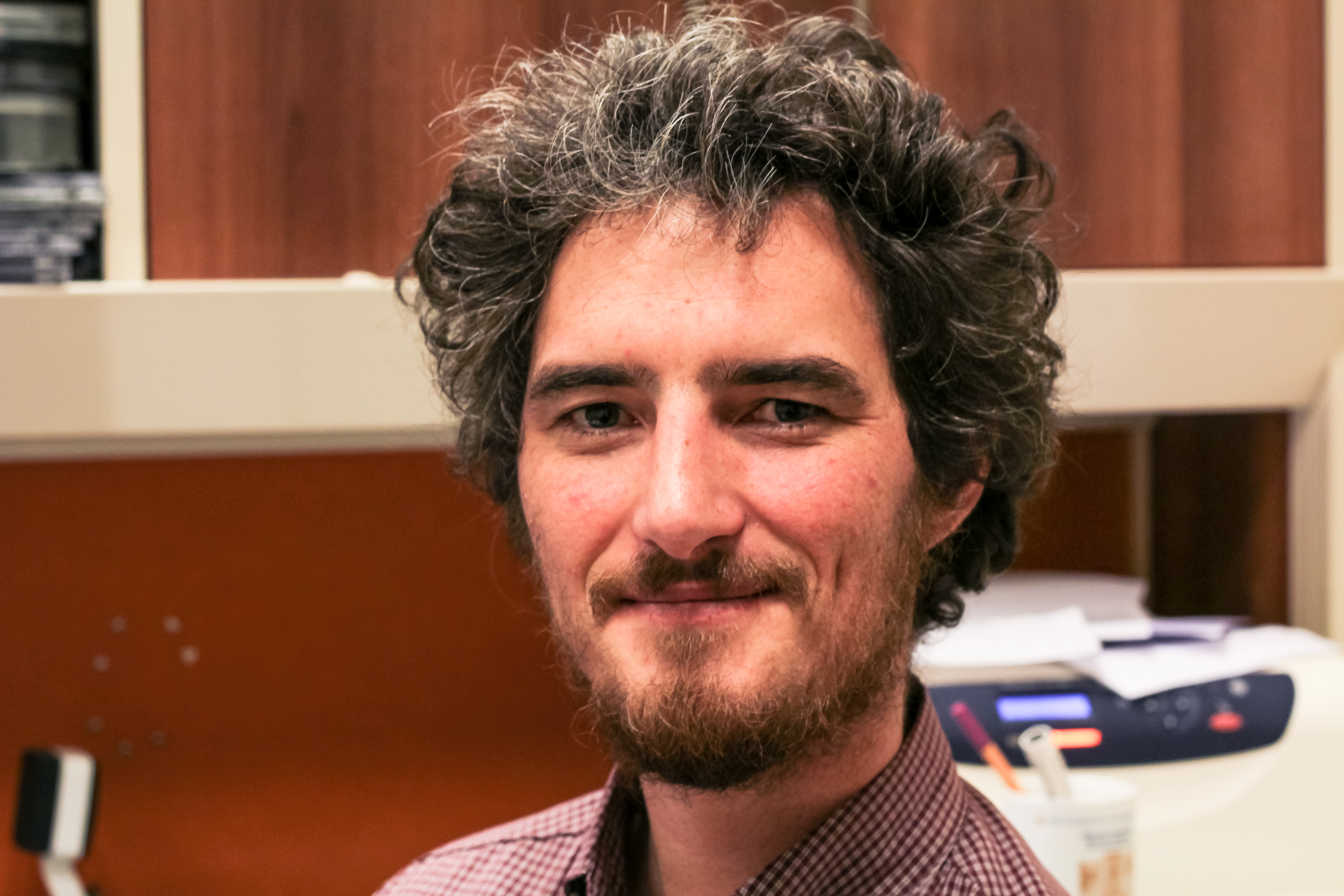BY: Sherif El Hakim
@sherifelhakim2
Some may say that Ryder Kouba’s job is one of the most important at AUC. Others may fail to understand why he is so passionate about preserving AUC history.
Kouba is the digital collections archivist in the Rare Books and Special Collections Library, where he is responsible for digitizing and providing online access to special collections materials and the preservation of born-digital materials.
There are various requirements to become a digital archivist and communication is a key quality an archivist must acquire, due to the countless interactions.
“You also have to be a good people person since we get collections through outreach to donors and work with them. We also work with researchers, students, faculty, etc. all the time, so it’s not a job for someone who wants to hide in a corner reading books all day,” he said.
Although Kouba has a BA in history, he recommends a Masters in Information Science is needed as another core element of being a digital archivist.
Organization, teamwork and team structure is also critical to ensuring that the digital materials are available for everyone to access.
“The staff digitizing materials is a huge part; for me I have dozens, if not hundreds, of spreadsheets to organize collections and items so that they’re useful to us and researchers and that’s a big part of my job,” he said.
The Caravan is one of the consistent documents that is digitized in the AUC archives and the digitizing of newspapers is often a litmus test for the archivists, but Kouba praised his team’s capabilities.
“The newspapers were especially challenging [because of] the way they’re folded, so that makes it challenging to keep all that in order. A lot of the old photographs and newspapers are fragile and we don’t want to press too hard, or tear a page, or do any damage. They’ve been trained and they work hard to prevent things like that from happening,” he said.
The Caravan celebrated its 100 year anniversary on February 17 and the old editions would not have been displayed, if it wasn’t for Kouba and the rest of his digital archiving team.
The Caravan has through the past century documented the events and day-to-day lives of the AUC community, therefore, Kouba believes that these archives are fundamental for learning about the university’s history.
“When people ask me about AUC’s history, I give them The Caravan,” he said.
Since The Caravan’s exhibit, people have become more interested in looking at old copies and comparing the stories of different generations.
“It’s interesting to see from the different Caravan editions the level of open-mindedness in different decades,” Kouba said.
However, some of the editions are not in the best condition due to them being timeworn. The paper is fragile and thin, highlighting the importance of having to digitize the copies, in order to preserve them.
Unfortunately, there are missing issues and Kouba is hoping that with the help of former students the collection can continue to grow.
“The Caravan does a great job documenting AUC, it captures student life and the heart of AUC,” he said.
Kouba highlighted the coverage of The Caravan differed after the move to the New Cairo Campus. At the Tahrir campus, there was usual coverage of events that took place around the university. From 2008 onwards, The Caravan has mainly focused on the AUC community.
As well as archiving The Caravan, the department also digitizes other historical documents and photographs of significance not just related to AUC, but of Egypt as a whole.
“Items from the 2011 Egyptian revolution, the Creswell papers and photography of Islamic architecture,” as Kouba stated are among AUC’s wide collection of archives.
